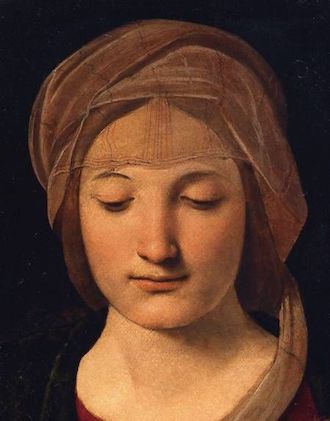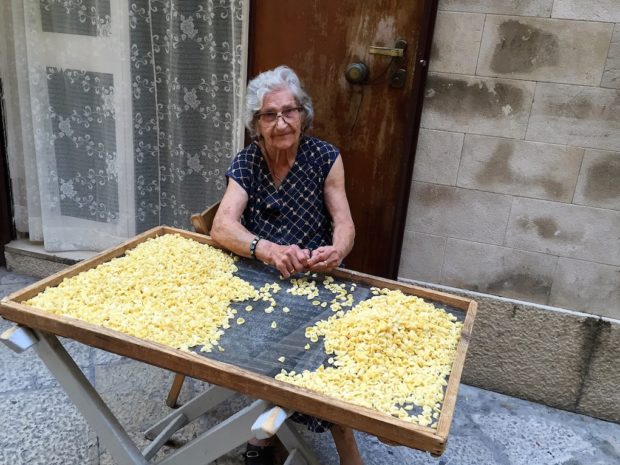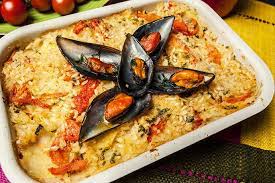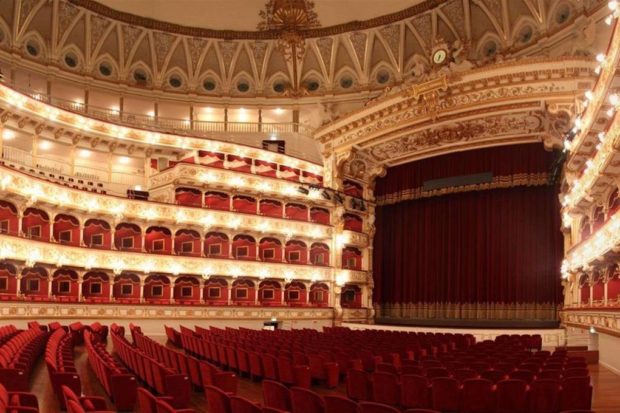During the past few years Puglia has become one of Italy’s touristic hotspots thanks to its delicious food, wines, and olive oil, multi-culture history (Greek, Roman, and Swabian), folk traditions like the pizzica (a frenzied local dance), beautiful white sandy beaches, and the fact that it’s still off-the-beaten-track so the “real Italy” with friendly genuine people and affordable accommodations, the most typical of which are called masserie or farmhouses which welcome guests. Magazines often call it “Italy’s Second Tuscany” but without the crowds.
Except for Lecce with its magnificent Baroque architecture and papier-mâché artifacts that you can watch being made, Puglia is better known for its scenery and lovely white-washed towns like Alberobello, Ostuni, Martina Franca, Locorotondo, and Gallipoli, than for its cities. However, with Pope Francis’ visit on July 7 and six large cruise ships docking here each week Bari, Puglia’s capital city and southern Italy’s most important commercial center after Naples, is getting more press and tourists.
In brief, ancient Roman Barium was simply a commercial center, but became the regional capital under the Saracens in 847, and was subsequently the seat of the catapan, the Byzantine governor of southern Italy. Under the Normans, to whom it fell in 1071, it became a significant maritime center rivaling Venice. Here’s why and when you should go?
The Basilica of St. Nicholas, the subject of my article published in La Voce on June 11, is Bari’s most important touristic and pilgrimage sight. As reported, it is located in Bari’s Old Town (Barivecchia) or medieval center, the location of several other sights. The Old Town is located on a peninsula stretching out into the Adriatic between the city’s two harbors. Home to 27 churches, it’s a labyrinth of narrow picturesque winding cobblestoned streets and small piazzas. It counts two important piazzas. Through Piazza Ferrarese, named for Stefano Fabri or Fabbro, a merchant from Ferrara who settled in Bari during the 17th century is a good way to enter the Old Town. Lined with restaurants today, recent urban renewal uncovered a short stretch of the Via Traiana, an extension from Benevento to Brindisi of the Via Appia built by the Emperor Trajan in 109 AD. From here it’s a very short walk to the Piazza Mercantile, which houses the Palazzo Sedile (Palace of the Seat), once the city hall. On its facade is an enormous clock, which strikes not only the hours, but also the quarter-hours. Nearby on a podium is the Column of Justice or of Shame with its ancient Roman lion. Debtors, adulterers, thieves, and other criminals were stripped and made to sit ass-up on the lion and with their hands chained to the column.

Only a short walk from the Basilica of St. Nicholas is the late 12th century Duomo or Cathedral. Its Romanesque architecture is based on St. Nicholas’ Basilica, but with a dome and one surviving tower (the other tower collapsed during an earthquake in 1613). The magnificent crypt with mosaic floors houses the icon of the Madonna Odegitria and the remains of St. Sabinus (461-566), a friend of St. Benedict whom he visited in Montecassino and Bari’s original patron saint.
Nearby is the Hohenstaufen Castle. Probably built in 1132 by the Norman King Roger II, it was destroyed in 1156 by King William of Sicily and rebuilt and reinforced by the Holy Roman emperor Fredrick II with a moat on three sides and the sea on the fourth. Isabella II of Aragon and her daughter Bona Sforza both lived here during the 16th century. Today the Castle is used for temporary art exhibitions.

Wikipedia recounts: “According to tradition, in 1221 Emperor Frederick II met St. Francis of Assisi in this castle. Supposedly the Emperor had a courtesan sent to Francis’ room and watched through the peephole to see what would happen. When Francis sent the woman away, Frederick was impressed with his principles; the two spent the rest of the night in conversation.”
I have been on underground walks in New York (under St. Patrick’s Cathedral), in Orvieto and in Naples, and Bari’s starts here at the Castle. It touches on over 1,200 years of history for what remains of Roman Barium today is underground. All of Bari’s medieval buildings in the Old Town were built on top of Roman and then of Byzantine buildings incorporating ancient Roman building materials. From under the Castle, which was built on remains of a Byzantine houses built on the remains of a Roman fort, the walk continues to under the crypt of San Sabino, which houses a pagan altar; a magnificent mosaic floor with an inscription thanking its benefactor, once in the entrance of a 5th century Christian church; and Byzantine wells. The walk ends below 16th-century Palazzo Simi where there are the remains of a Byzantine church’s apse and a medieval fireplace. Today Palazzo Simi is the administrative headquarters of Bari’s Archeological artifacts. Sadly Bari Sotterranea (Underground Bari) is not well publicized. Not held everyday and only for a minimum of 10 participants, this splendid 2-hour tour must be booked in advance from www.eventidautore.it or by phoning: +39-340-9546476. Tickets cost 16 euros or 10 for students. English is possible.

Bari Sottoterranea was even more enjoyable because beforehand I’d visited the Old Town above on foot on a most enjoyable 3-hour Street Food Tour, where we (six participants) sampled local pizza, olives, cheese, prosciutto, wine, pasta, and homemade gelato. A highlight was when our guide Francesco took us to the modest home of a family where we sampled homemade orecchiette (ear-shaped pasta), probably Puglia’s most famous dish, in several different sauces, tomato and peperoncino, with turnip tops and sausage, and with mussels. Thanks to www.veloservice.org it’s possible to do the same tour by bike, rickshaw, and Segway or choose from a list of other tours in the Bari area: Castel del Monte, Alberobello, and Matera, this year’s capital of European Culture. All their tours leave from Strada Vallisa, an-easy-to-find narrow street just off Piazza Ferrarese. Veloservice also organizes cooking and pasta-making classes.

Born-to shoppers should be grateful to Napoleon’s brother-in-law Joachim Murat. As King of Naples, he ordered the building in 1808 of a new section of Bari, laid out on a rationalist grid plan, which bears his name as the Murattino. One of these streets, Via Sparano, is a pedestrian lined with elegant designer boutiques and jewelry stores.
A fourth and romantic walk, which also needs no guide or guidebook, runs about three quarters of a mile along the picturesque fishing port on Lungomare Nazario Sauro, (Sauro was a World War I hero). Just beyond a permanent Ferris wheel (well-worth a ride for its views of the city) is the sadly under-visited Bari Provincial Art Gallery. It houses splendid collections of paintings from the Renaissance to the present including works by Veronese, Bellini, and Tintoretto, of ceramics, of Neapolitan terracotta crèche figures, and of clothing. A block away is Bari’s only five-star newly renovated hotel, Grande Albergo delle Nazioni. Its excellent rooftop restaurant “La Terrazza” offers an outstanding menu of pasta and seafood dishes.

Puglia is renowned for its food and wine. Typical dishes in Bari include orecchiette alle cime di rape e salsiccia (orecchiette with turnip tops and sausage), a casserole of rice baked with potatoes and mussels, burrata (a soft white cheese more gooey than mozzarella), and panzarotti (a savory turnover stuffed with tomato and mozzarella or mushrooms, or onions, anchovy, and caper fillings), and of course fresh seafood. Downtown Bari counts no Michelin starred restaurants, but five have been awarded Michelin plates: “La Bul”, “Ai 2 Ghiottoni”, “Osteria delle Travi’Il Buco’”, “Biancofiore”, and “La Pignata” with two others on the city’s outskirts “La Taberna” and “Da Nicola”. I also recommend “Terranima”, “La Battigia” and most of all “Al Pescatore” for its sea urchin dishes and seafood antipasto. For unbeatable local snacks head straight for reasonably-priced, informal Tiella. Just across a side street, it’s especially convenient before or after an opera or ballet performance at the magnificent Teatro Petruzzelli, burnt down by arsonists during the night October 26/7, 1991 and reopened after restoration in 2009.

Inaugurated on February 14, 1903 with Meyerbeer’s Les Huguenots, Teatro Petruzzelli is Italy’s fourth largest theater and it’s worth a trip to Bari to see a performance. If your travel plans can’t permit that, be sure to book a theater tour when you’re in town.

Another reason to come to Bari is for Bif&st, the annual film festival held at the end of April. Its splendid program for movie lovers includes a Oscar-like competition for new films from all over the world, remakes of old films, master classes, press conferences by competing actors and directors, symposiums on film-related subjects, and lectures by film producers and directors. Some are held at the Teatro Petruzzelli. At Bif&st 2019, April 27-May 4, the festival will celebrate its 10th anniversary. Buy your tickets on line by clicking on Bif&st.
Still another reason to come to Bari is to participate in the St. Nicholas celebrations on December 6th and from May 7th to 9th. In particular on May 8th, the anniversary of the arrival of his relics in Bari, the relics are carried in procession through the Old Town and, after a 2-hour mass, put on a boat out to sea in front of the city only returning after sundown for an evening of festivities and fireworks.
Sadly the destruction of the Teatro Petruzzelli was not the darkest night in Bari’s modern history. That little known disaster (even living in Italy for almost 50 years I had never heard about it until my trip to Bari for Bif&st 2018) dates to December 2, 1943. Wikipedia recounts: “105 German Ju-88 Junker bombers attacked the port of Bari, which was a key supply center for allied forces fighting their way up the Italian peninsula. Over 20 allied ships were sunk in the overcrowded harbor, including the U.S. Liberty Ship John Harvey, which was carrying mustard gas; mustard gas was also reported to have been stacked on the quayside awaiting transport (the chemical agent was intended for retaliation if German forces initiated chemical warfare.) The presence of the gas was highly classified and the U.S. had not informed the British military authorities in the city of its existence. This increased the number of fatalities, since British physicians—who had no idea that they were dealing with the effects of mustard gas, [burns and blindness],-prescribed treatment for those suffering from exposure and immersion, which proved fatal in many cases. Because rescuers were unaware they were dealing with gas casualties, many additional casualties were caused among the rescuers, through contact with the contaminated skin and clothing of those more directly exposed to the gas… On the orders of Franklin D. Roosevelt, Winston Churchill and Eisenhower, records were destroyed and the whole affair was [shamelessly] kept secret for many years after the war. The U.S. records of the attack were declassified in 1959, but the episode remained obscure until 1967, when the writer Glenn B. Infield exposed the story in his book Disaster at Bari. Additionally, there is considerable dispute as to the exact number of fatalities. In one account: [S]ixty-nine deaths were attributed in whole or in part to the mustard gas, most of them American merchant seamen. Others put the count as high as “more than one thousand Allied servicemen and more than one thousand Italian civilians.” This tragic incident, nicknamed “Europe’s Pearl Harbor”, gained Bari the unwelcome distinction of being the only European city to experience chemical warfare during World War II.












